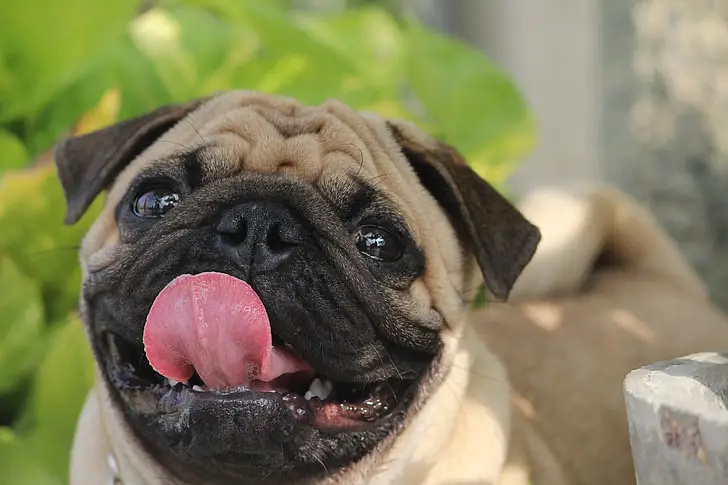Pugs, with their charming personalities, can bring immense joy to your life. However, like any breed, they may exhibit certain behavior challenges. Understanding these issues and implementing effective solutions is key to fostering a well-behaved and happy Pug companion. Let’s troubleshoot some common behavior problems and explore practical solutions.
**1. Excessive Barking
Issue: Pugs are known for their vocal nature, and excessive barking can become a nuisance.
Solution:
- Identify Triggers: Determine what prompts the barking. Is it excitement, boredom, or a response to external stimuli?
- Positive Distraction: Provide toys or engage in activities to redirect their attention.
- Training Commands: Teach commands like “quiet” or “enough” and reward your Pug for stopping the barking.
**2. Separation Anxiety
Issue: Pugs are affectionate and may develop separation anxiety, leading to destructive behavior.
Solution:
- Gradual Departures: Practice short periods of separation and gradually increase the time.
- Create a Routine: Establish a consistent routine before leaving and upon returning to create a sense of predictability.
- Comfort Items: Provide comforting items, such as a favorite toy or blanket, to ease anxiety.
**3. Pulling on the Leash
Issue: Pugs, with their strong build, may pull on the leash during walks.
Solution:
- Training Collar or Harness: Use a properly fitted harness or collar designed to discourage pulling.
- Positive Reinforcement: Reward your Pug for walking calmly by your side.
- Stop and Start: Stop walking when your Pug pulls, and resume when they walk nicely.
**4. Chewing on Everything
Issue: Pugs, especially puppies, may have a tendency to chew on furniture, shoes, or other items.
Solution:
- Provide Chew Toys: Offer a variety of appropriate chew toys to satisfy their need to chew.
- Puppy-Proof the Environment: Remove tempting items from their reach.
- Supervision and Correction: Supervise and correct inappropriate chewing, redirecting them to acceptable items.
**5. Stubbornness in Training
Issue: Pugs can be a bit stubborn, making training challenging at times.
Solution:
- Positive Reinforcement: Use treats, praise, and affection to motivate your Pug.
- Short, Fun Sessions: Keep training sessions short and enjoyable to maintain their interest.
- Consistency: Be consistent with commands and rewards to reinforce good behavior.
**6. Excessive Snoring and Snorting
Issue: Pugs are prone to snoring and snorting due to their unique facial structure.
Solution:
- Monitor Breathing: While snoring is normal for Pugs, keep an eye on changes in breathing patterns.
- Maintain a Healthy Weight: Obesity can exacerbate breathing issues, so ensure your Pug maintains a healthy weight.
- Regular Vet Check-ups: Schedule regular check-ups to monitor respiratory health.
**7. Aggression or Territorial Behavior
Issue: Pugs may display aggression or territorial behavior, especially in certain situations.
Solution:
- Professional Training: Seek the assistance of a professional dog trainer for guidance.
- Positive Reinforcement for Calm Behavior: Reward calm behavior and redirect aggression with positive reinforcement.
- Avoid Triggers: Identify and avoid situations that trigger aggressive behavior.
**8. Jumping on People
Issue: Pugs, in their enthusiasm, may jump on people when excited.
Solution:
- Ignore and Reward: Ignore the jumping and reward them when they have all four paws on the ground.
- Training Commands: Teach commands like “off” to discourage jumping.
- Redirect Energy: Channel their excitement into appropriate activities, such as sitting or playing.
**9. Difficulty with Housetraining
Issue: Pugs, especially puppies, may struggle with housetraining.
Solution:
- Consistent Schedule: Establish a regular feeding and potty schedule.
- Positive Reinforcement: Reward successful potty behavior with treats and praise.
- Supervision and Crating: Supervise your Pug indoors and use a crate when you cannot monitor them to prevent accidents.
**10. Excessive Begging for Food
Issue: Pugs, with their love for food, may become persistent beggars.
Solution:
- Establish Feeding Routine: Stick to a consistent feeding schedule to discourage begging.
- Ignore Begging Behavior: Avoid giving in to begging, as it reinforces the behavior.
- Provide Alternative Distractions: Offer toys or engage in play to redirect their attention.
Addressing common behavior issues in Pugs requires patience, consistency, and positive reinforcement. By understanding their unique characteristics and implementing these solutions, you’ll contribute to a positive and well-behaved relationship with your Pug companion. If challenges persist, consulting with a professional trainer or veterinarian may provide additional insights and guidance.


Leave a Comment